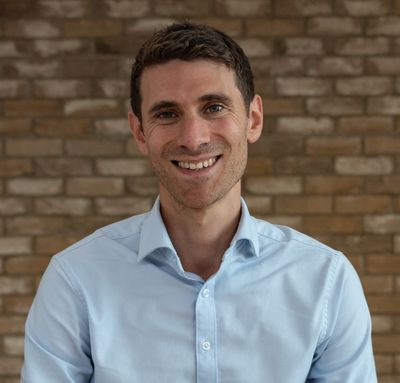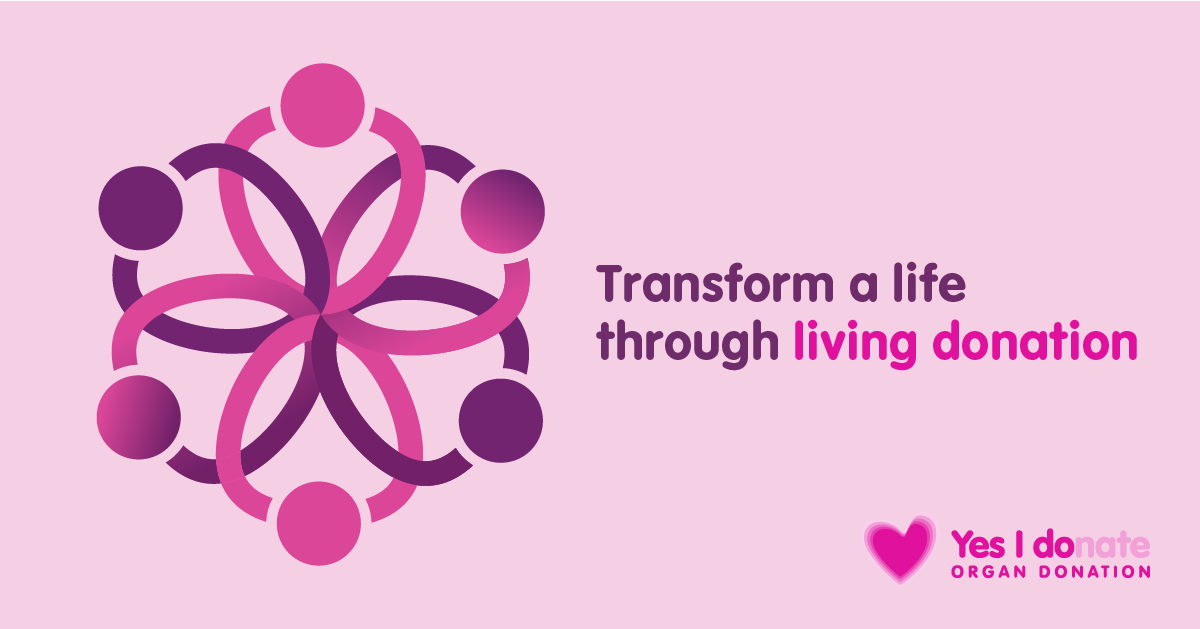How to ensure the best chances of success for your funding applications

Getting grant and funding applications right is absolutely critical to ensuring that your organisation stands the greatest possible chance of success but how can you ensure you put your best foot forward?
We asked charities and foundations for their advice on how to make your applications stand out for the right reasons, as well as (in the case of the charities) what’s worked for them.
Tops tips include knowing your audience and appealing to their priorities, eliminating internal jargon and sector speak, knowing your financials, and making sure your proposal passes the “so what, who cares” test.
Advertisement
Read on to hear what each one had to say (and for some current funding opportunities, click here).

Anthony Hayman, Director of Fundraising & Communications, Noah’s Ark Children’s Hospice:
Know your audience – This is the most important thing to get right. I believe the key factor behind the biggest charitable foundation grant I have solicited at Noah’s Ark Children’s Hospice was a conversation I had with the Grant Manager of that foundation. At the very end he shared a core motivation for its trustees. I focused my subsequent pitch and application entirely on work Noah’s Ark does which aligns with that motivation. When it’s not possible to speak with a grant body representative, research other projects the funder has supported and read its accounts in detail to gain as comprehensive a picture as possible of what boxes to tick.
Answer the question – Grant managers and trustees have to read through a lot of paperwork and it can be laborious. Your job is to make reading your application as easy as possible for them. When there’s an application form to fill in (rather than a free-form proposal), make sure the first line of each answer directly addresses the question posed. Don’t wait until the second or third paragraph – you may have lost the reader by then.
Gain external endorsements – Your organisation can gain a lot of credibility by association. In your applications, include endorsements from senior representatives of third-party organisations your charity works with. The more well-known and reputed the organisation, the better.
Spend £100 on a graphic designer – This is an easy win. Many grant bodies don’t have an application form, instead preferring free-form applications. Your proposals need not be works of art but any graphic designer worth their salt will be able to produce an attractive application template very inexpensively. Submitting an attractive document won’t win your charity a grant but submitting a document that looks overly homespun might well lose you a grant.
James Ravine, Grants Manager, WWT (Wildfowl & Wetlands Trust)
– Use creative visual techniques – such as project videos/animations
– Know the funder and appeal to their priorities
– Include clear, well-supported evidence of need
– Prove your credentials and include anecdotal experiences from existing beneficiaries that influence hearts and minds
– Back up applications with personal communications with key decision makers and influencers at the funder.
– Work in impressive partnerships that add more value than the sum of the parts
– Provide clear, ambitious but realistic outcomes that are measurable

Rozie Corbett, Head of Income Development, Endometriosis UK
At Endometriosis UK, we put a big emphasis when preparing our applications on very clearly specifying the problem that needs to be solved, and why our organisation is uniquely positioned to provide that solution. Harnessing the insights and experiences of those who access our services and our volunteers is an important part of that.
We also take a lot of care to eradicate internal jargon, phrasing or acronyms to ensure that our application can be fully understood by an external reader. As a healthcare charity, this includes thinking about what level of medical detail or technical explanation is needed.
Alongside that, we would always seek to align the language and content to the funder’s own criteria, giving clear signposts to how the project fulfils their own objectives. As a fundraiser you have to be speaking the language of the person you’re asking, rather than trying to get them to speak your language.
Ranjeet Khare, Senior Corporate Partnerships Manager, and Penny Walters, Senior Manager Partnerships and Development, RNIB
Ranjeet Khare says:
It’s more important than ever to really understand your potential corporate partners and how your organisation can add additional value to their own organisational objectives, for instance around their diversity and inclusion strategy. Making the connection between your cause and their organisation, outside of the funding proposition, is what makes all the difference.
Penny Walter’s tip is as follows:
So often, the primary emphasis of submitting a grant application is on gathering the information needed to complete the questions in the form. For new projects however, we really place the importance on developing a robust project plan, including a Theory of Change, regardless of whether it’s requested by the funder. Whilst it might take a little longer and be even more intense to pull together an application, being driven by creating a strong deliverable project ultimately creates a more powerful and convincing application – with greater chance of successful delivery too.


Harrison Leonard, Head of Philanthropy, Penny Brohn UK
Taking the time to properly qualify a prospect through research, and emphasising interpersonal relationships with funders, are a grant writer’s two greatest guarantors of success.
Trustees and grant administrators will often tell you that most applications are discarded because the charity in question isn’t eligible for funding. In other words, the person submitting the application did not carefully review the giving criteria before submitting their proposal.
Getting this right from the start ensures no one’s time is wasted, allows you to tailor your application to align with a grant maker’s interests, and demonstrates synergy between your work and projects they’ve funded in the past.
Just as important, it gives you the chance to establish a relationship with a trustee or other gatekeeper. Relationships are so important in grant making. Opt for ‘in person’ interactions whenever possible. Secondly, if you’ve put in the interpersonal relationship work at the front end, you’ll usually have a good sense at the time of formal submission whether your application is likely to succeed. That’s the position you want to be in as often as possible.
In 2019 I hosted one of the key funders in my portfolio at our AGM in our National Centre on the outskirts of Bristol. As I drove her back to the train station, she asked about my work background. When I told her about all the odd jobs I’d held before finding a niche in fundraising, she said: “I knew you weren’t a career trust fundraiser.” When I asked why, she replied, “Because you treat me like a human being, not a wallet.”
Any modest successes I can boast as a fundraiser can be summed up by that response. Most philanthropists want to use their wealth and privilege to make people’s lives better, and we are responsible for helping to ensure their money is stewarded well. So, if you really want your work to stand out, do your research, develop an intimate sense of who you’re applying to, and treat your funders like partners instead of pocketbooks. The rest will take care of itself.

Kerys Sheppard, Head of Fundraising, Shelter Cymru
The technical elements of budgets, project outcomes and evaluation processes aside, any application you put forward will be read by people. Those people will make decisions that could bring real change to your charity. So I would definitely encourage humanity; put forward your case for support with no jargon, no assumption of any prior knowledge of your cause and as though you are writing to a friend (albeit in a very structured way!).
As simply as you can, tell the funder (the person) what the problem is and, more importantly, why your charity is best placed to solve it. Grant makers aren’t there to give us the answers, but they can certainly play a part in enabling us to find them. Making the ask from one citizen to another can connect funders with your work more quickly, making them more likely to support.
Morna Lane, Head of Trusts and Corporate Partnerships, Sightsavers
First and foremost, know your audience. Before putting your keyboard in action, research the organisation. What’s important to them? What else do they support? What issues are they trying to address?
In parallel, and where possible, don’t go in cold to application processes. Try and arrange a conversation with funders to get their take on what they want to achieve, share insights into your cause and note any synergies. More organisations are open to this than you’d think and doing this creates a human connection. It’s also a good time to talk through the application process.
Evidence of why the proposed project is needed and of past successes is also important. Focus your application on the individuals you support, share their stories and show the impact funding will have for them.
Our most successful applications are submitted following conversations with prospective donors. Any written documents reinforce and reflect on that conversation, and creating that human connection helps the decision makers remember Sightsavers and the individual they spoke to.
Working in over 30 countries across Asia and Africa, we also have a backbone of strong research, personal stories and evidence of why our programmes are needed. We back up proposals with images, film, and other content to paint a picture of the people we support and provide a ‘shopping list’ with costs related to how many individuals we’d like to reach, objectives and outputs. Our track record of measurable impact metrics has been mentioned by numerous partners.
It’s worth noting that not all funding successes come from formal and external application processes. We research and reach out to trusts and organisations that have an affinity with our vision. Partners with a particular interest in our areas of work come direct to us too. What helps here is our reputation and visibility in those sectors – eye health, neglected tropical disease and inclusion for people with disabilities. Never underestimate the value of a strong reputation and brand.

Josephine McCartney, Chief Executive, Kent Community Foundation
To organisations looking for funding I would say: always ensure that you know your financials, not just your project costs but your overall financial health, and always answer all the questions as honestly as you can, so that funders have the full picture. It is extremely important to us that you can demonstrate the difference a grant would make to your beneficiaries. We like to see that grantees are passionate about what they do and that they have listened to their beneficiaries and understand what they need.
What we don’t like to see are over-inflated costs in a grant application. Building trust with a funder is all about being honest about where your organisation is financially and what challenges lie ahead. If you need money to run your organisation, then say that. Don’t try to hide your overheads in your project costs because experienced grant-makers will know. There is information on our website to help you with your application and our grants team is available to answer your questions, so don’t hesitate to ask if you need advice.
Paul Gunstensen, Director of WASH, Stone Family Foundation
1. Focus on the why (why this proposal, why this solution, why the reader should care) and ensure it responds to a clear articulation of what the problem you are trying to solve is.
2. If responding to a template, make sure you clearly respond to the question being asked and not the one you want to answer; play back the language being used by the funder. If not, make sure you understand the focus of the funder and play back their priorities and how you are responding to them.
3. Try to avoid jargon and sector speak, it can be very hard to penetrate if you aren’t a sector expert.
4. Ensure you have consistency throughout the document and budget and other annexes – if you make the reader work too hard to understand your great idea, they might not bother.
5. Make sure your proposal passes the “so what, who cares” test – explain why what you are planning to do will make a difference.







